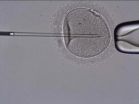(Press-News.org) An older medication originally approved to treat heart problems eases the symptoms of a very rare muscle disease that often leaves its sufferers stiff and in a good deal of pain, physicians and researchers report in the Oct. 3 issue of the Journal of the American Medical Association.
The findings are good news not only for the relatively small number of people around the world estimated to have nondystrophic myotonia, but also for many other patients who have one of the thousands of diseases that are very rare, according to neurologists at the University of Rochester Medical Center who took part in the study.
"This study can serve as a blueprint for future rare disease research," said neurologist Jeffrey Statland, M.D., senior instructor in Neurology and the first author of the paper. "This study shows that by bringing together experts and patients around the world and building a common infrastructure, we can tackle rare conditions that have eluded rigorous clinical study up to now."
Rochester neurologist Robert "Berch" Griggs, M.D., another author of the paper and the leader of a Rochester center devoted to studying rare neurological disorders, notes that, ironically, many people suffer from rare diseases.
"Each rare disease might affect only a few thousand people, but there are thousands of rare diseases. Current estimates are that perhaps 30 million people are affected by some form of rare disease," said Griggs.
The corresponding author of the study is Statland's former adviser, Richard Barohn, M.D., the overall principal investigator of the study and chair of the Department of Neurology at the University of Kansas Medical Center.
The study is the brainchild of Griggs and several other investigators who are part of a consortium known as CINCH – the Consortium for Clinical Investigation of Neurologic Channelopathies. Griggs heads the group, which studies neurologic disorders caused by irregularities in the cell gates or channels that regulate levels of crucial substances like potassium, sodium and calcium in our cells. Nondystrophic myotonic is one such condition.
People with nondystrophic myotonia generally have very stiff and painful muscles. Sometimes when they sneeze, for instance, they have trouble opening their eyes afterward, or they might have trouble loosening their hand once they've gripped a doorknob or shaken someone's hand. Usually, sports are very difficult, and sometimes, holding a regular job is impossible.
Since so few people have the disease – neurologists think the incidence is roughly 1 in 100,000 – the disease hasn't captured the attention of the public or researchers in the same way as Parkinson's or Alzheimer's diseases. Without any thorough, reliable studies to go on, physicians have treated patients based on experience or anecdotal evidence.
Statland and Griggs expect that approach to change with the new study, which pulled together doctors and patients from four nations to study whether the generic drug mexiletine alleviates symptoms. The 59 participants received either 200 mg of mexiletine three times daily, or placebo, for four weeks, and then after one week, they received the other treatment for four weeks.
The results show that mexiletine, an anti-arrhythmic medication rarely used for its original indication, significantly improved patient-reported stiffness in nondystrophic myotonia. Participants reported that their stiffness improved by at least 40 percent; pain reported by patients was slashed in half; and patients reported improvements in their everyday quality of life. Testing also showed that mexiletine reduced the abnormal electrical activity in the muscles, and patients were able to relax their grip and open their eyes much faster.
Griggs said the Rare Disease Network begun by the National Institutes of Health, which supported CINCH for 10 years, exists to tackle problems just like this one. There isn't much financial incentive for a pharmaceutical firm to sink money into a study of a disease that affects a small number of people, especially if the medication is generic.
"Pulling off this study is quite an accomplishment when you consider not only the relatively small number of people who have this disease, but also the challenge of getting enough of them together to do a study that is statistically significant," said Griggs.
Statland began working on the project more than six years ago, before his residency at the University of Kansas. His odyssey doing research has included a summer research fellowship at the National Institutes of Health and a Howard Hughes Medical Institute research scholar award. His current work in Rochester doing research and treating patients is funded largely by the Muscular Dystrophy Association. He has been at Rochester since 2010.
Other authors include Rochester neurologist Emma Ciafaloni, M.D.
###
In addition to the University of Rochester Medical Center and the University of Kansas, other sites for the study included Brigham & Women's Hospital in Boston, the University of Texas Southwestern in Dallas, the London Health Sciences Center in London, Ontario, University College London Institute of Neurology in London, and the University of Milan in Italy.
The study was supported by the U.S. Food and Drug Administration (RO1 FD 003454) and the National Center for Research Resources of the National Institutes of Health (U54 NSO59065). Statland's work was supported by an NIH experimental therapeutics fellowship (T32 NSO7338-20).
Rare disease researchers notch a win
2012-10-03
ELSE PRESS RELEASES FROM THIS DATE:
Fear of treatment puts stress on women undergoing fertility therapy
2012-10-03
Fertility treatment has a strong emotional impact on women who want to have children. A study of European countries with the highest number of assisted reproduction cycles identifies which aspects of reproduction treatment contribute to psychological stress.
Inability to conceive is extremely stressful for women who want to have a family. This notion is shown by a study published in the 'Human Reproduction' journal on patients in four countries with the highest number of cases of assisted reproduction cycles in Europe: France, Germany, Italy and Spain.
"Infertility ...
Study suggests stem cell transplant survivors at increased risk of developing heart disease
2012-10-03
(WASHINGTON, October 3, 2012) – New research appearing online today in Blood, the Journal of the American Society of Hematology (ASH), suggests that long-term survivors of hematopoietic cell transplants (HCT) are at an increased risk of developing heart disease risk factors such as high blood pressure, diabetes, and high cholesterol when compared to the general population. These risk factors, combined with exposure to pre-HCT therapy, contribute to a noticeably increased risk of heart disease over time.
HCT, the transplantation of blood-forming stem cells from the bone ...
Deforestation in snowy regions causes more floods
2012-10-03
WASHINGTON – New research suggests that cutting down swaths of forest in snowy regions at least doubles – and potentially quadruples – the number of large floods that occur along the
rivers and streams passing through those forests.
For decades, the common perception in hydrology has been that deforestation in such areas made seasonal floods bigger on average, but had little effect on the number of large floods over time,
said geoscientist Kim Green of the University of British Columbia. But a new study by Green and her co-author Younes Alila published today in Water ...
Got dry eyes? Measuring eyelid sensitivity may reflect the causes
2012-10-03
Philadelphia, Pa. (October 3, 2012) - A simple test of eyelid sensitivity may help vision professionals in evaluating one of the most common eye-related symptoms: dry eyes. A new study linking increased eyelid sensitivity to decreased function of the eyelid margins is presented in the article – "Lid Margins: Sensitivity, Staining, Meibomian
Gland Dysfunction, and Symptoms", appearing in the October issue of Optometry and Vision Science, official journal of the American Academy of Optometry. The journal is published by Lippincott Williams & Wilkins, a part of Wolters ...
Home-based assessment tool for dementia screening
2012-10-03
With baby boomers approaching the age of 65 and new cases of Alzheimer's disease expected to increase by 50 percent by the year 2030, Georgia Tech researchers have created a tool that allows adults to screen themselves for early signs of dementia. The home-based computer software is patterned after the paper-and-pencil Clock Drawing Test, one of health care's most commonly used screening exams for cognitive impairment.
"Technology allows us to check our weight, blood-sugar levels and blood pressure, but not our own cognitive abilities," said project leader Ellen Yi-Luen ...
ARS scientists devising new ways to protect avocados
2012-10-03
This press release is available in Spanish.U.S. Department of Agriculture (USDA) scientists are coming up with new strategies to combat a beetle threatening the nation's avocado trees.
Laurel wilt disease is caused by the fungus Raffaelea lauricola, and is vectored by the redbay ambrosia beetle, an invasive pest from Asia that has spread to the Carolinas, Florida and west to Mississippi. The disease kills 90-95 percent of infected trees. Scientists are concerned that it will soon reach Mexico and California, which are major avocado production areas. Its victims also ...
Ecologists start new Antarctic season with paper comparing animals' handling of adversity
2012-10-03
BOZEMAN, MONT. – Montana State University ecologists who are about to return to Antarctica for another season had to adapt to dramatic changes in the sea ice last year.
Now they have published a paper that says the Weddell seals they monitor had to deal with some dramatic changes in ice in recent years, too. In fact, the seals handled the adverse conditions well and suffered less than the Emperor penguins in that region.
The paper was published Sept. 26 in the international journal, "Proceedings of the Royal Society B: Biological Sciences." Lead author was Thierry ...
Our preferences change to reflect the choices we make, even three years later
2012-10-03
You're in a store, trying to choose between similar shirts, one blue and one green. You don't feel strongly about one over the other, but eventually you decide to buy the green one. You leave the store and a market researcher asks you about your purchase and which shirt you prefer. Chances are that you'd say you prefer the green one, the shirt you actually chose. As it turns out, this choice-induced preference isn't limited to shirts. Whether we're choosing between presidential candidates or household objects, research shows that we come to place more value on the options ...
Mayo Clinic: Melanoma up to 2.5 times likelier to strike transplant, lymphoma patients
2012-10-03
ROCHESTER, Minn. -- Melanoma is on the rise nationally, and transplant recipients and lymphoma patients are far likelier than the average person to get that form of skin cancer and to die from it, a Mayo Clinic review has found. That is because their immune systems tend to be significantly depressed, making early detection of melanoma even more important, says co-author Jerry Brewer, M.D., a Mayo dermatologist. The findings are published in the October issue of Mayo Clinic Proceedings.
VIDEO ALERT: Video of Dr. Brewer is available for journalists to download on the Mayo ...
Does moral decision-making in video games mirror the real world?
2012-10-03
New Rochelle, NY, October 3, 2012—Making moral judgments is increasingly a central element of the plots of popular video games. Do players of online video games perceive the content and characters as real and thus make moral judgments to avoid feeling guilty? Or does immoral behavior such as violence and theft make the game any more or less enjoyable? The article "Mirrored Morality: An Exploration of Moral Choice in Video Games" published in Cyberpsychology, Behavior, and Social Networking, a peer-reviewed journal from Mary Ann Liebert, Inc., publishers examines these types ...


